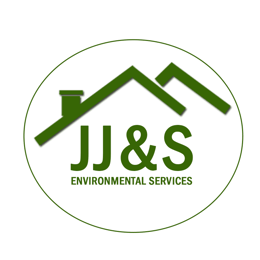Insurance Agent vs Adjuster: asbestos risks in California claims
Insurance Agent vs Adjuster: navigating asbestos risks in California claims
In the insurance industry, understanding the roles of insurance agents vs adjusters is crucial. Both play significant parts in assessing and managing risks for clients. However, when it comes to asbestos exposure, agents and adjusters face distinct responsibilities, especially in California. This blog will delve into their differences, the risks adjusters face with asbestos, legal obligations surrounding asbestos, and financial implications for insurers.
When dealing with asbestos-related claims, insurers and adjusters face significant health and financial risks. JJ&S Environmental Abatement Services provides specialized asbestos abatement solutions, ensuring properties are safe and compliant with regulatory standards. Our team’s expertise in asbestos removal minimizes exposure risks, protecting both adjusters and insurers from potential liabilities and health hazards. By partnering with JJ&S, insurance companies can ensure thorough, professional asbestos handling, reducing claim costs and safeguarding all parties involved. Whether it’s an initial assessment or full abatement, JJ&S supports insurers in managing asbestos claims responsibly and efficiently..png?width=948&height=237&name=Beige%20Aesthetic%20Business%20Banner%20Email%20Header%20(600%20x%20150%20px).png)
Difference between insurance agent and adjuster
An insurance agent primarily focuses on selling insurance policies. They educate clients on coverage types, help select suitable policies, and often assist with general inquiries. Agents earn commissions, and their income depends on sales volume.
On the other hand, an insurance adjuster assesses damage and determines compensation for claims. Adjusters may work directly for insurance companies or independently, investigating property damage and evaluating claims. These roles require separate licenses and specific skills, with adjusters needing a keen eye for detail and risk management.
Risks to Loss Adjusters and Insurers with Asbestos
For adjusters, investigating claims involving asbestos is fraught with health risks. Exposure to disturbed asbestos fibers, often found in damaged structures, can lead to serious respiratory diseases, including mesothelioma. Even a minor disturbance can release hazardous fibers, putting adjusters at significant risk. Thus, insurers must ensure adjusters have proper asbestos awareness training to minimize exposure risks.
Asbestos-related claims also carry substantial financial implications. Discovering asbestos in a damaged property can increase claim values, potentially resulting in significant payouts. This can be especially challenging in California, where construction standards vary and asbestos is present in many older buildings. Proactively addressing these risks can prevent long-term financial losses for insurers.
Legal obligations of insurers and loss adjusters regarding Asbestos
California regulations mandate that insurers and adjusters adhere to stringent asbestos handling guidelines. The Control of Asbestos Regulations requires all parties dealing with asbestos-related claims to be informed about safety procedures. Loss adjusters inspecting properties with potential asbestos hazards must follow "duty to manage" practices, including training and using protective equipment. They must also document findings and report to appropriate authorities when asbestos is discovered.
Insurance companies should maintain an asbestos register for buildings they insure, allowing adjusters to verify any risks before entering a property. This register is essential for compliance, as it details areas where asbestos might be present, helping to safeguard adjusters and maintain regulatory standards.
Financial Risks to Insurers in Asbestos-Related Claims
When asbestos is involved in a claim, insurers face increased costs and potential legal issues. California's building codes emphasize asbestos awareness, making insurers vigilant about claims that could escalate due to asbestos-related complications. Failure to address asbestos risks in claims can lead to lawsuits and higher payouts. Insurers should implement proactive measures to mitigate these financial risks.
The Diffuse Mesothelioma Payment Scheme (DMPS), introduced in the UK, highlights the importance of responsibly addressing asbestos-related claims. While California doesn’t have an identical scheme, the precedent underscores the liabilities insurers face if they neglect asbestos in claims. To minimize these risks, insurers should ensure proper documentation and risk assessment protocols are consistently applied.

How much do claims adjusters make in California?
In California, claims adjusters earn higher-than-average wages due to the complex regulatory environment and high property values. Skilled adjusters who specialize in asbestos-related claims may earn even more, as these cases require additional resources and meticulous attention to safety.
Adjusters may receive bonuses based on the efficiency and resolution of their cases, which incentivizes quick and thorough evaluations. Asbestos-related claims, however, often require extra precautions, with adjusters following strict protocols and using personal protective equipment (PPE). Insurers may offer higher compensation to adjusters handling high-risk cases to reflect the added health and safety risks.
How can loss Adjusters and insurers mitigate asbestos exposure risks?
To protect both adjusters and insurers, several best practices can be implemented. During the first notification of loss (FNOL), insurers should inquire about potential asbestos in the damaged area. This initial step helps avoid unnecessary exposure. Once an adjuster is assigned, they should conduct a pre-visit risk assessment to determine if asbestos is present. This is critical in California, where older buildings frequently contain asbestos materials.
If asbestos is suspected, the insurer should arrange for a licensed asbestos removal contractor to handle the materials. Insurers must prioritize adjuster safety by providing PPE and thorough asbestos awareness training. Regular training updates ensure that adjusters stay informed about the latest safety practices and regulatory changes.
Understanding the differences between insurance agents vs adjusters is essential when handling asbestos-related claims. While agents help clients secure coverage, adjusters manage the often-risky claims process. In California, adjusters face additional challenges due to the prevalence of asbestos in older buildings. By following best practices and adhering to regulations, insurers can protect adjusters’ health and mitigate financial risks.
By maintaining compliance and prioritizing safety, insurers and adjusters can handle asbestos-related claims effectively. Proper training, risk assessment, and adherence to legal obligations create a safer environment for all involved.
FAQ
1. What is the difference between an insurance agent and an insurance adjuster?
Insurance agents sell policies and guide clients on coverage options, while adjusters assess property damage and determine compensation for claims. Adjusters often deal directly with risks like asbestos exposure when inspecting damaged properties.
2. What risks do insurance adjusters face with asbestos exposure?
Adjusters working on claims in older buildings may encounter asbestos-containing materials, which can release dangerous fibers if disturbed. This exposure can lead to serious health issues, making asbestos awareness training essential for adjusters.
3. What legal obligations do insurers and adjusters have regarding asbestos?
Under regulations, insurers and adjusters must follow safety protocols when handling asbestos-related claims. This includes maintaining an asbestos register, conducting risk assessments, and ensuring adjusters are trained to manage asbestos safely.
4. How can insurers and adjusters mitigate asbestos exposure risks?
Insurers can mitigate risks by conducting initial assessments during the first notification of loss (FNOL), using licensed abatement contractors, and providing personal protective equipment (PPE) for adjusters to reduce exposure to asbestos fibers.
5. How can JJ&S Environmental Abatement Services support insurers?
JJ&S offers comprehensive asbestos abatement services that help insurers manage claims safely. By partnering with JJ&S, insurers ensure professional handling of asbestos, reducing liabilities and protecting adjusters from exposure during inspections.






